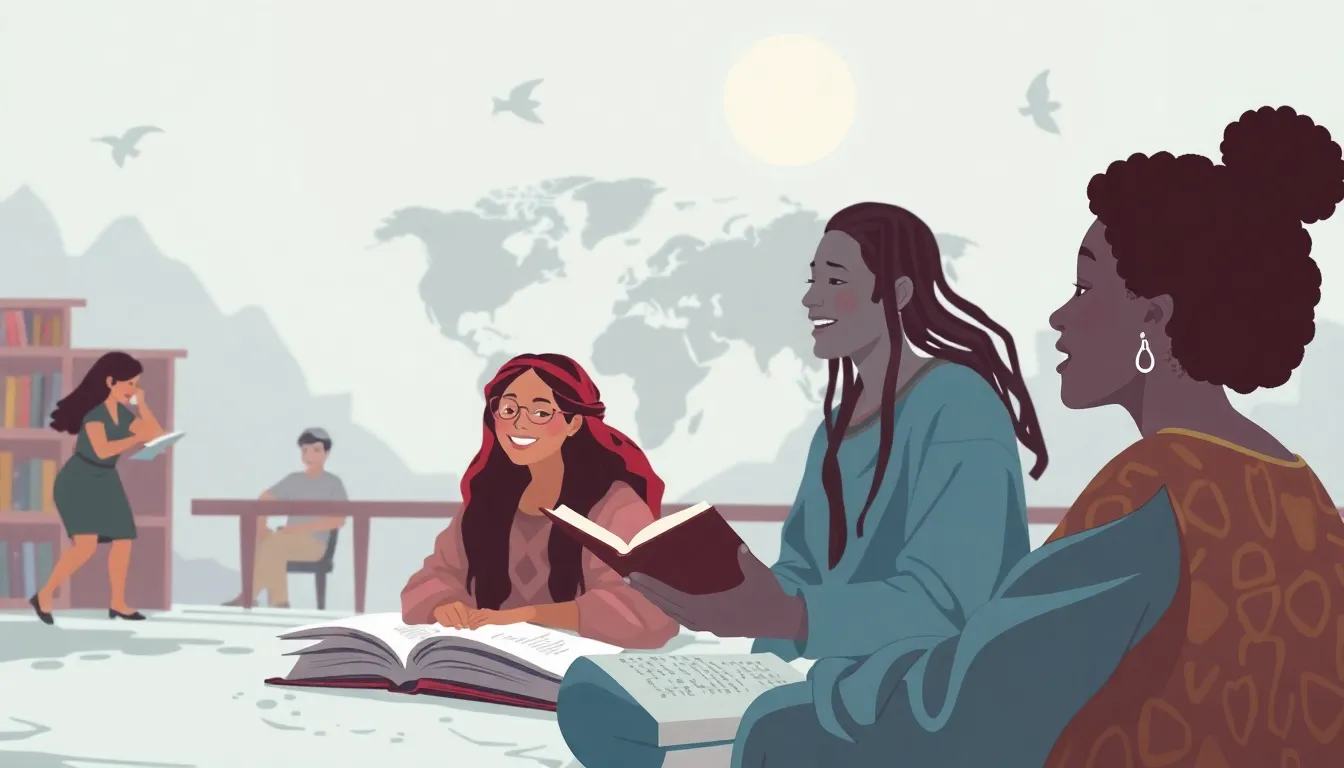
Exploring World Literature: Voices Across Continents 🌍
Introduction
World literature invites readers to traverse cultural borders, discovering how stories reflect universal hopes and distinct histories. By examining narratives from Africa, Asia, Europe, and the Americas, you will sharpen critical thinking while appreciating humanity’s shared imagination.
1. Defining World Literature
World literature is not merely a collection of famous novels; it is an analytical framework that situates texts within global dialogues. Scholars such as David Damrosch argue that a work becomes “world literature” when it circulates beyond its original language and influences readers elsewhere. This perspective emphasizes translation, reception, and the power of literary networks to reshape meaning across societies. Consequently, a single story can embody multiple cultural identities, challenging the notion of a static, monolithic canon.
2. Canon Vs. Counter‑canon: Multiple Perspectives
Traditional literary canons often privilege Euro‑American voices, marginalizing authors from colonized regions. Contemporary critics advocate for a counter‑canon that elevates writers like Chinua Achebe, Naguib Mahfouz, and Haruki Murakami, whose works interrogate post‑colonial realities. Analyzing the same theme—such as exile—through Achebe’s Things Fall Apart and Murakami’s Kafka on the Shore reveals divergent conceptions of displacement, yet both illuminate the human yearning for belonging. By juxtaposing these perspectives, students learn to recognize bias, negotiate cultural relativism, and appreciate literary plurality.
3. Research Connections: Interdisciplinary Insights
World literature intersects with history, anthropology, and even environmental science, offering fertile ground for interdisciplinary research. For instance, climate‑change narratives like Margaret Atwood’s MaddAddam trilogy can be examined alongside real‑world climate data to assess how fiction anticipates scientific trends. Similarly, literary depictions of trade routes—such as the Silk Road in The Tale of the Three Kingdoms—provide primary sources for economic historians studying early globalization. Engaging with scholarly databases, students can trace citation networks, mapping how a single novel influences academic discourse across continents.
4. Career Connections: Turning Passion into Profession
A deep familiarity with world literature opens pathways to diverse careers beyond teaching. Literary translators, for example, blend linguistic precision with cultural nuance, enabling stories to cross language barriers while preserving authorial intent. Publishing editors specialize in acquiring foreign rights, curating global catalogs for readers worldwide. Cultural consultants advise film studios on authentic representation, ensuring adaptations respect source material. Even data analysts now employ computational text mining to detect thematic patterns across thousands of translated works, supporting market research and academic inquiry.
Mini Quiz & Experiment
-
Quiz: Which scholar coined the term “world literature” to describe transnational textual circulation?
- A) Harold Bloom B) David Damrosch C) Northrop Frye D) Susan Sontag
-
Quiz: Identify one narrative technique that Achebe uses to counter colonial narratives.
-
Quiz: How can climate‑change fiction be employed as a pedagogical tool in science classes?
-
Experiment: Choose a short story originally written in a language you do not speak, locate two English translations, and compare how each translator handles culturally specific idioms. Document differences in a 300‑word reflective journal.
Conclusion
World literature equips you with analytical lenses to decode complex societies, fosters empathy for diverse experiences, and sparks curiosity about careers that bridge art and academia. Continue exploring by reading a novel from a continent
Continue exploring by reading a novel from a continent you haven’t yet visited—perhaps Things Fall Apart (Africa), One Hundred Years of Solitude (South America), The Tale of Genji (Asia), or The Stranger (Europe)—and share your insights in a class discussion or a short blog post.
Happy reading, and let every story expand your world!